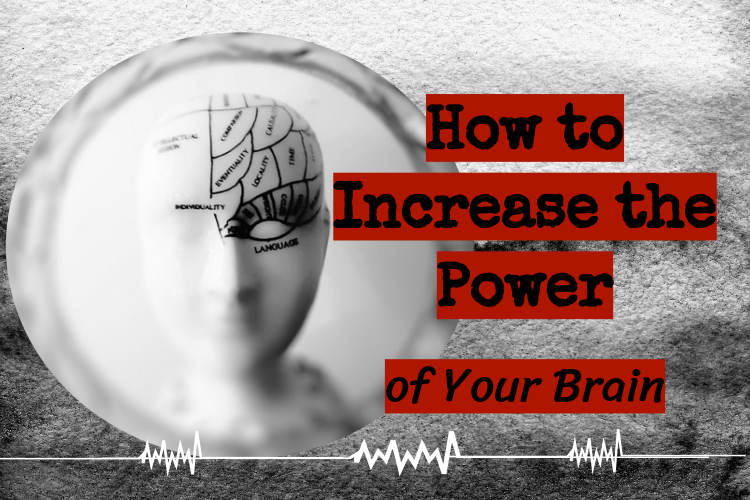What if you could grow more brain cells? Previously, researchers believed that the number of brain cells (called neurons) in the adult brain declined with age and no new ones were produced.
On the contrary, now we know adults continually develop new brain cells. A protein called brain-derived neurotrophic factor (known as BDNF) encourages the growth of new neurons and protects them from stress and cell death. BDNF was dubbed “miracle grow for the brain” by Dr. John Ratey in his ground-breaking book Spark: The Revolutionary New Science of Exercise and the Brain. Therefore, increase BDNF; increase the power of your brain.
What is BDNF?
BDNF controls several processes of neurogenesis: the production of neurons from stem cells, cell differentiation, and survival. BDNF mediates neuroplasticity-the ability of the brain to repair itself by reconnecting neurons and reducing chronic inflammation.[1] [2]
BDNF boosts the growth of new brain cells and protects existing ones. Meanwhile, BDNF allows the brain cells to join and communicate in new ways. As a result, you experience improved memory, better cognitive function, improved learning, and understanding.
How do I increase BDNF?
Increase BDNF with moderate intensity aerobic exercise.
Compelling evidence shows exercise significantly increases BDNF. As Dr. David Perlmutter, board-certified neurologist and four-time New York Times bestselling author stated: [3]
“How do I enhance the growth of new brain cells? And I tell people there’s something you have to buy, and here’s the pitch, you’ve got to go out and buy a new pair of sneakers. That probably aerobic exercise is the most powerful way that we can change our gene expression and flip on the switch that turns on the gene that makes the chemical called BDNF that grows new brain cells. So, this is a very, very important growth hormone that we can increase in our bodies by spending some time walking, dancing, the elliptical machine, swimming, biking, whatever it is that you can do to get your heart rate up, and do it every single day.”
Dr. David Perlmutter
How much and what type of exercise do I need to increase BDNF?
There are three basic types of exercise: aerobic exercise, strength or resistance training, and stretching for flexibility. Ideally, an exercise program includes all three.
However, let’s keep it simple—just do it. Find activities you enjoy. Because if you enjoy doing it, you will keep doing it. As Sean Foy, renowned author, exercise physiologist, behavioral coach and speaker, says “the best exercise is one that you will do.”
If you are currently not exercising—start slowly. Continue to challenge yourself to do a little more each day without overdoing it. In his book UnDo It, Dr. Dean Ornish says “the more you move the more you improve, yet a little more movement every day goes a long way.”
Please consult your physician before beginning an exercise program, especially if you are under a doctor’s care. If possible, I recommend consulting a personal trainer for consultation and advice.
What are the benefits of exercise and increased BDNF?
Protection against neurodegenerative diseases such as Alzheimer’s disease
About 5.7 million Americans have Alzheimer’s disease as of 2018 statistics. In addition, by the mid-century, the number of people living with Alzheimer’s disease in the United States is projected to grow to 13.8 million. [4]
No effective drug treatment for Alzheimer’s disease exists. However, compelling research continues on how exercise and increased BDNF levels can protect the brain—perhaps even reverse cognitive and neurodegenerative diseases. In fact, this may lead to a treatment option for Alzheimer’s disease and other neurogenerative disorders. [5]
Improvement in brain function
Move your body, improve your brain power.
Research on how moderate aerobic exercise improves brain function and even brain volume holds great promise for the reversal of mild cognitive impairment (known as MCI) and even the prevention of Alzheimer’s disease. For example, researchers found that adults with MCI who exercised four times a week over a six-month period experienced an increase in brain volume. [6]
Another exciting study concluded aerobic exercise in sedentary older adults has the potential to improve brain function: memory, processing speed, working memory updating, and executive function tasks. [7]
Conclusion
Previously, I exercised to lose weight and feel more attractive. But God created our bodies for movement. Our bodies become well when we move them. Even our brains!
Mild cognitive impairment (MCI) presents as an early sign of Alzheimer’s disease. Physical changes in the brain may appear up to 20 years before MCI begins. [4] So today is the day. Don’t delay. Don’t wait to start an exercise program. Don’t wait to increase BDNF and maximize the power of your brain.
For more information
I recommend UnDo It, How Simple Lifestyle Changes Can Reverse Most Chronic Diseases, a new book by Dean Ornish, M.D. and Anne Ornish. Dr. Ornish and his wife created a life-transforming program, the first of its kind covered by Medicare and many other insurance carriers for reversing heart disease. To summarize, the basic lifestyle changes are: eat well, move more, stress less, love more. Good advice–for anyone!
References
- https://www.ncbi.nlm.nih.gov/pmc/articles/PMC4273623/
- https://www.ncbi.nlm.nih.gov/pubmed/28778220
- https://themodelhealthshow.com/grain-brain/
- https://www.alzheimersanddementia.com/article/S1552-5260(18)30041-4/fulltext
- https://www.ncbi.nlm.nih.gov/pubmed/27701410
- https://press.rsna.org/timssnet/media/pressreleases/14_pr_target.cfm?ID=1921
- https://www.ncbi.nlm.nih.gov/pmc/articles/PMC5241294/



